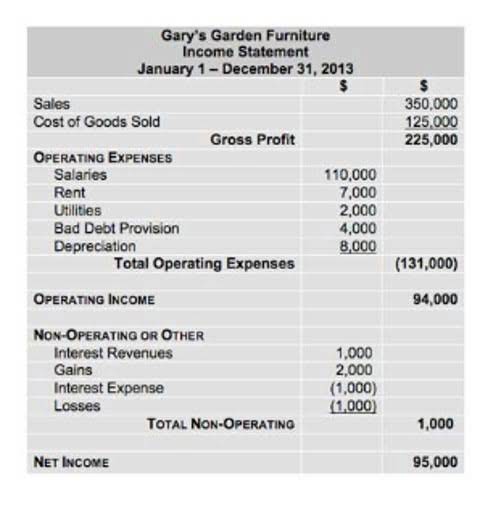
Without proper communication, team members may not be aware of their responsibilities, leading to delays and errors. Inefficient communication can also Year-End Accounting Checklist result in misunderstandings, which can further hamper the workflow. In addition to tracking expenses, businesses should also regularly review their expenses to identify areas where they can reduce costs.
- To speed up this process, consider automation software that includes digital receipt capture so employees can upload their paper expense receipts instantly.
- For instance, if a massive spreadsheet has an error or typo, it can create an inaccurate view of a company’s finances.
- Accurate records give you a clear view of your financial health, helping you balance debits and credits effectively.
- Assess your business’s performance by reviewing key metrics like profitability, gross margins, and year-over-year growth to use these insights to plan for the coming year.
- These activities help ensure the accuracy and completeness of your financial statements.
- Make sure you check these eight procedures off your year-end accounting closing checklist before the year officially comes to a close.
- Having a clear understanding of each person’s role and responsibilities, combined with proper training on accounting software and tools, can prevent delays and confusion during the year-end close.
Perform regular account reconciliations
The good news is, there are solutions available that can simplify the end-of-year accounting process and make it less daunting. This includes government contributions, special tax exemptions, and private grants, which must be properly accounted for in your financial statements. Tax planning involves collecting and preparing all relevant documentation required for tax reporting.
- A clear schedule will help you ensure timely and accurate completion of year-end tasks and sets clear expectations for the team, helping prevent bottlenecks.
- Having templates for these statements helps streamline the process and ensures consistency in presentation.
- We are excited to present this comprehensive and practical Year-End Accounting Checklist for Nonprofits, specifically designed to simplify your financial close processes.
- Doing so will ensure you start the next financial year with the right financials.
- The final step is preparing financial reports and statements for audits, ensuring everything aligns for regulatory compliance.
Accounting Integrations

You can keep a record of all the reconciliations Interior Design Bookkeeping performed during the year, which will reduce the workload at year end. It’s important to handle things professionally while reaching out to customers about past-due invoices. If the collection process becomes difficult, offer them a payment plan incentivizing them to clear out the invoice at once.

Close your books in record time

This may include assessing the fair value of the investments and determining whether any impairments need to be recognized. There are several types of 1099 forms, and each reports a different kind of income. The most common 1099 is the 1099-MISC, which reports miscellaneous income such as royalties, rents, and prizes.
Copyright ©. PLANERGY
- Pay special attention to bank accounts, ensuring that recorded balances align with actual cash.
- Cloud-based accounting software enables real-time collaboration between departments, ensuring everyone is on the same page and has access to the most up-to-date information.
- The financial close schedule outlines the timeline and tasks you need to complete for a successful year-end close.
- Your client’s year-end statements are crucial as they summarize financial activities over the past 12 months.
- Setting early deadlines for submitting outstanding documents (like employee expenses or vendor invoices) ensures that you’re not scrambling at the last minute.
This time of year also coincides with month-end closing and quarter-end reporting, which means significantly heavier workloads and seriously overwhelmed accountants. Keeping a record of all accounting data for future reference is critical for all businesses. Hence, don’t forget to add ‘backing up of important information’ to your year-end checklist. Adopt a reliable backup system that will protect your important accounting information on your devices. Utilize cloud backup to store data, which will help you protect against cyber attacks or other such IT crises.

After the year-end close, take time to review the process with your team and identify areas for improvement. A post-close debrief allows you to evaluate what worked well and what didn’t, making the next year’s close even smoother. Rather than waiting until the year-end to reconcile accounts, adopt a habit of monthly or quarterly reconciliations. This proactive approach makes the year-end process more manageable because the majority of discrepancies and adjustments will have already been identified and resolved. By following this comprehensive checklist, you can ensure an efficient and precise year-end close, allowing your business to start the new year on strong financial footing.
Jetpack Workflow
Finally, it is important to review financial statements for accuracy and completeness. Another important step in the year-end close checklist is invoice verification that entails checking all invoices issues and received during the fiscal year to ensure there are Online Accounting no incorrect or missed invoices. Companies must confirm proper records of all expense and revenue invoices to avoid discrepancies. The finance professionals can utilize accounting software to automate and simplify the process. This will help prevent overlooking or misfiling, ensuring smooth transactions in the year-end accounts. The year-end closing inventory count is a critical physical and financial check on the organization’s stock, including items, goods, merchandise, and materials in a store.
